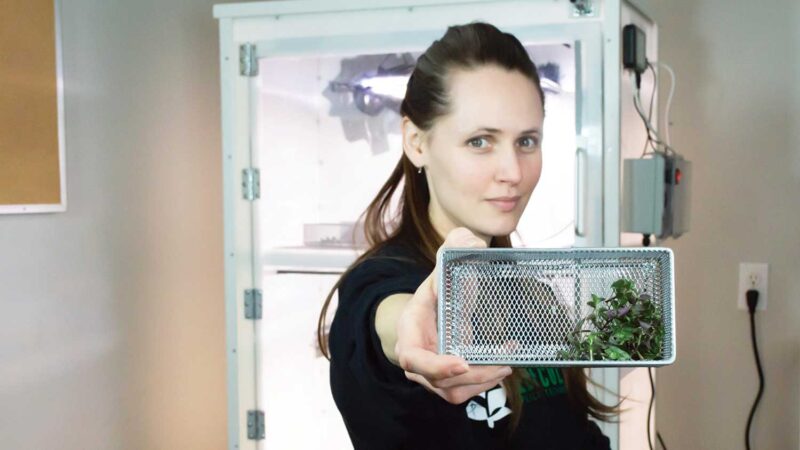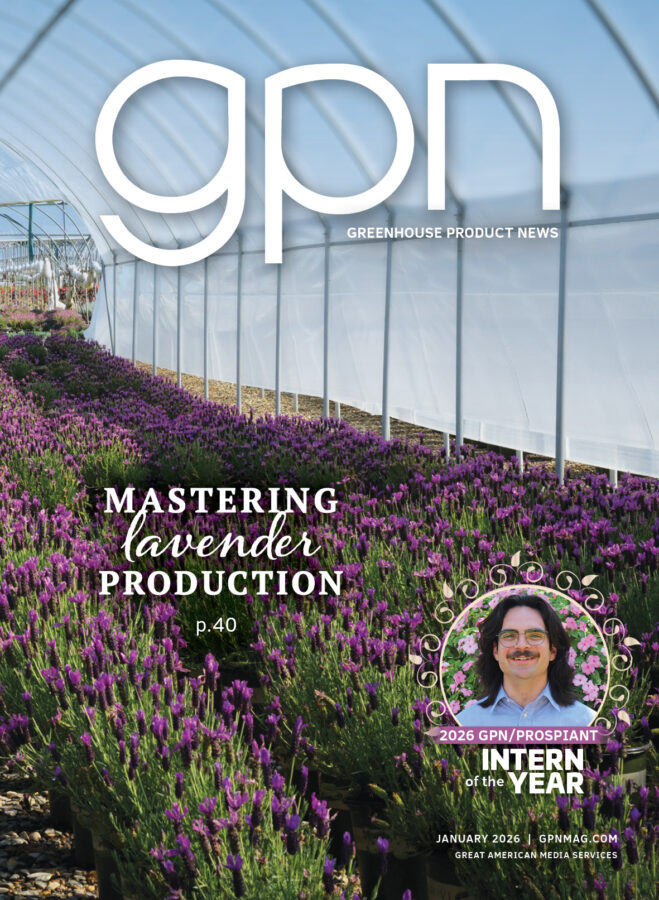Forty Under 40 Perspectives: Local propagation is the future
It’s 2015 and I’m trekking 14 miles a day through fields of spruce, hoisting up branches with a gardening pole the length of my body. I’m praying not to spot the egg sac of an invasive pest that’s haunted U.S. forests and agriculture since it was released in the 1800s.
In 2019, I’m chewing my tongue in the windowless conference room for the fourth time this month. We’re meeting again about how many tens of thousands of dollars we should spend testing for Xylella fastidiosa in the tissue culture we plan to export, as the same bacteria decimates European olive orchards.
Different setting, same problem: our industry is conditioned to bargain ecological safety plus piles of hard-earned nursery dollars for the promise of cheaper plants produced with foreign labor.

HOW DID WE GET HERE?
Colonists brought the first documented foreign plant material from their European homes in the 1600s. Today, U.S.-bound plant imports have leapt 35% in just the past three years and have outpaced our exports by nearly seven times (trademap.org, 2023). We can order plant materials from any climatic region or wage system on earth, and expect delivery within days by chilled cargo plane. But what is turning away from local propagation truly costing us?
Along with rising plant imports, costs of battling invasive pests and pathogens in the U.S. have exploded from $2 billion per year in the 1960s to over $26 billion per year today (NeoBiota, 2021).
It’s tempting to task science and government with preventing all plant disease outbreaks — but would you trust even the best doctor to accurately flag every disease another patient might transmit to you? How about the best politician? Of course not, especially while new mutations arise every day. We can’t expect scientists and governing bodies like the USDA to protect against all risk of ecological and financial disaster even as imports skyrocket.
If invasive diseases and pests cost the U.S. more than the entire U.S. horticulture market is worth ($18 billion), and if plant material import increases our exposure to these threats, isn’t it time to solve local propagation again?
WHY TODAY IS THE RIGHT TIME TO EMBRACE LOCAL (AGAIN)
Costs of plant material imports have increased due to heightened restrictions, rising freight and logistics costs, instability from political unrest, rising overhead and management costs and increasing costs to quarantine pathogens. These costs are frequently overlooked, but will continue to escalate.
Encouragingly, incentives for domestic production are making a comeback.
There’s an active surge in automation and AI tech (some of it even works), financial incentives like the USDA Farm Labor Stabilization and Protection Pilot Program are published constantly, and companies — like the one I founded, Rebel Cultures — are producing custom domestic tissue culture and developing solutions to dramatically and permanently reduce local tissue culture propagation costs across the industry.
WHAT CAN EACH OF US DO?
The diseases already in our ecosystems are challenging enough, right? Instead of treating new financial and ecological threats like international VIPs, we have the choice to propagate locally.
Our process is the best predictor of our future — if our plants come from foreign sources, we can expect foreign pests and diseases to kill businesses and ecosystems. This is especially true today as our climate becomes friendlier to bacteria, fungi, viruses and pests, while defense systems in plants acclimated to native environments weaken.
The best way to begin is small:
- Admit that propagation sources are within our control. Despite how businesses may have operated in the past, the choice to risk importing a foreign pest or pathogen in future shipments belongs to every individual nursery, breeder and licensee.
- Seek ways to support the return of local propagation so that it can become the new, higher standard across our industry. If you’re interested in piloting a batch of domestically produced tissue culture, I’d be thrilled to help you.
- Embrace the challenging and rewarding process of growing with better systems than we use today, knowing you’re in good company.
Thank you to the many teachers, mentors and supporters who believe in a better future for the green industry, and who have helped me learn everything I know. And thank you GPN for elevating the voices of this year’s Forty Under 40. I look forward to serving our industry alongside my classmates for the next 40 years.
WHAT DO WE GAIN BY RETURNING TO LOCAL PROPAGATION?
We grasp unique advantages when local propagation is our default.
We AVOID:
• Unnecessary exposure to ecological and financial disaster
• Ever-changing compliance and import restrictions
• Quality decline during long shipments
• International freight and logistics costs
• Excessive carbon consumption and packaging waste
• Compromised intellectual property
• Overhead-intensive negotiations with foreign suppliers and customs agencies
• Disconnection from our work
We MAINTAIN:
• Supply chains and ecosystems uninterrupted by foreign pathogens and pests
• Focus on value-add activities in our workflow
• Higher levels of sanity
We ACHIEVE:
• Safer, more secure businesses and ecosystems
• Increased pride and connection in our work
• Process control
• A workflow that makes sense because it aligns with why we started in the industry
• More reasons to invest in our teams, habitats and local economies









 Video Library
Video Library 


















